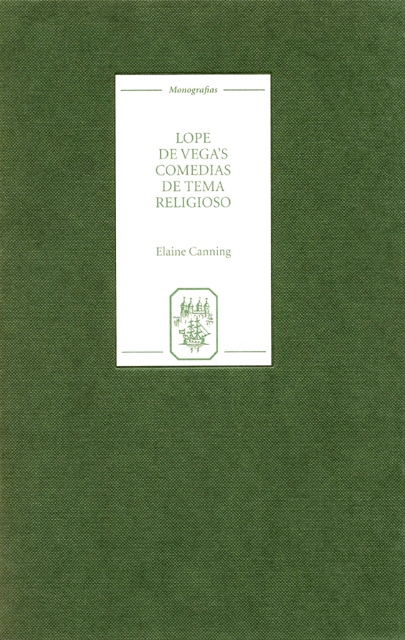5 - Doña Clara – Saint or Sinner? Role-Playing Within the Role in La Buena Guarda
Published online by Cambridge University Press: 04 May 2023
Summary
Written in 1610 and first published in 1621, La buena guarda presents the plight of Clara, abadesa, who is forced to confront the effects of both human and divine love. Based on the legend of the monja sacristana, a devoted nun who abandons the monastery with her lover and who is replaced by the Virgin or an angel in her absence, La buena guarda focuses on the flight of Clara with Félix, the mayordomo. The play opens with a diatribe against female vanity as Carrizo, the sacristán of the monasterio, criticises the female preoccupation with physical appearance. Subsequently, the action concentrates on Félix’s declaration of love for Clara, the efforts of both to overcome human passion, and Clara’s ultimate decision to become his lover. In Act II, the extent of Clara’s devotion to the Virgin is illustrated through the lengthy monologue which she offers to her patron and in which she calls upon the Mother of God to protect her flock. Outside the monastery, Clara and Félix consummate their love while an angel plays the role of Clara, abadesa, under orders from the Virgin. At the end of Act II, Clara resolves to win divine favour, having been abandoned by Félix. Thus, in Act III, Clara, disguised as Juana, the labradora, returns to the monastery after three years of penance, confronts the angel who has been playing her part and regains her authority as abadesa.
Unlike Lo fingido verdadero, La buena guarda is not a fully-developed metaplay, but it does concern itself with the metatheatrical device of roleplaying within the role. Through the exploitation of this technique, the play emphasises the problematic nature of identity in terms of both physical appearance and the inherent characteristics of the individual. Audience dissociation is not only generated as a result of the enactment of various roles by Clara, abadesa / adúltera / labradora, but most significantly, through the presentation of the complex double image of Clara, protagonist, and Clara, the angel who takes her place in the abbey. Indeed, the replacement of Carrizo during his absence from the monasterio with Carrizo fingido, another angel, also contributes to the estrangement of the audience. Essentially, angels perform Clara’s and Carrizo’s original roles as they assume new ones. As will become evident in the course of this chapter, Clara’s engagement in roleplaying is defined by her shifting concern with human and divine love.
- Type
- Chapter
- Information
- Publisher: Boydell & BrewerPrint publication year: 2004

